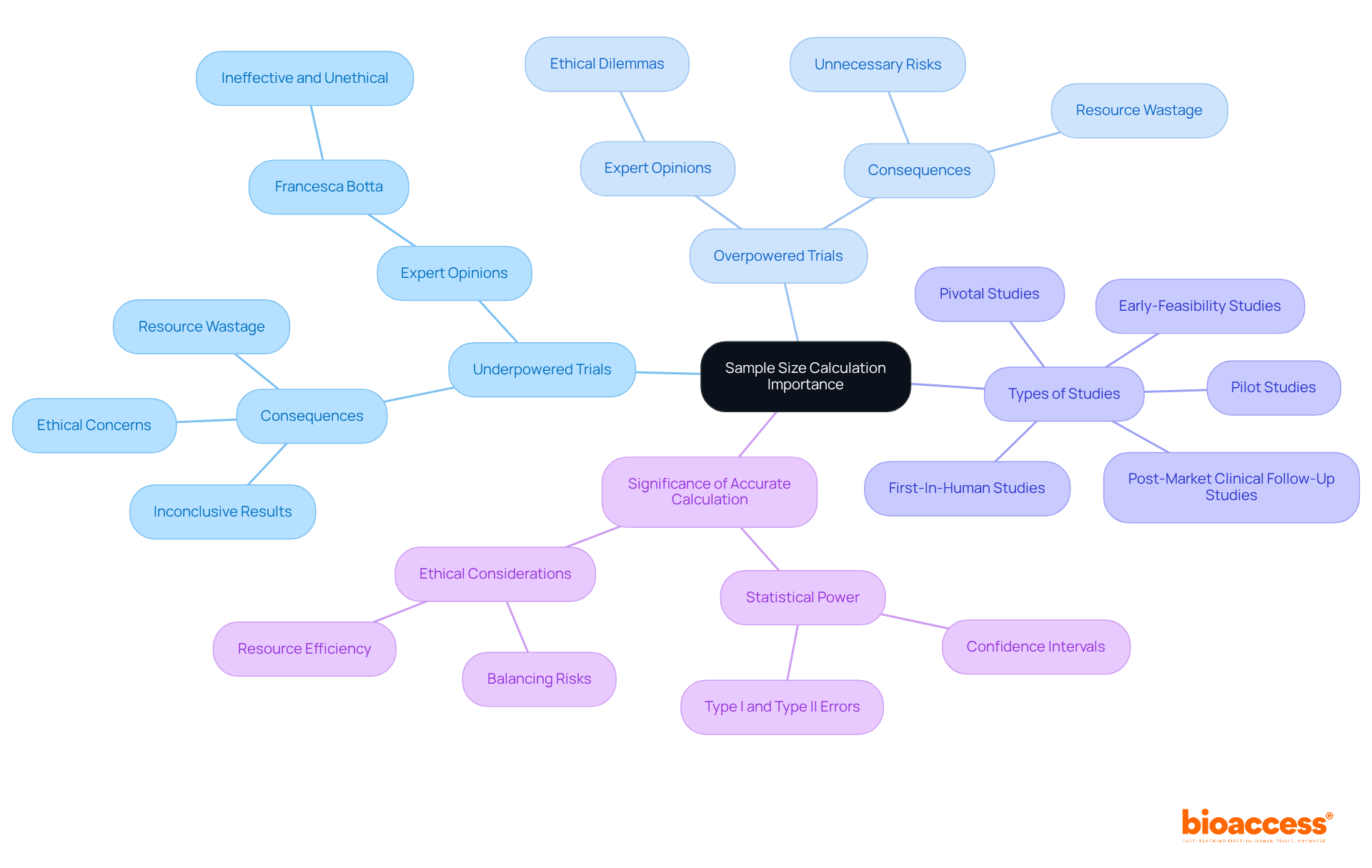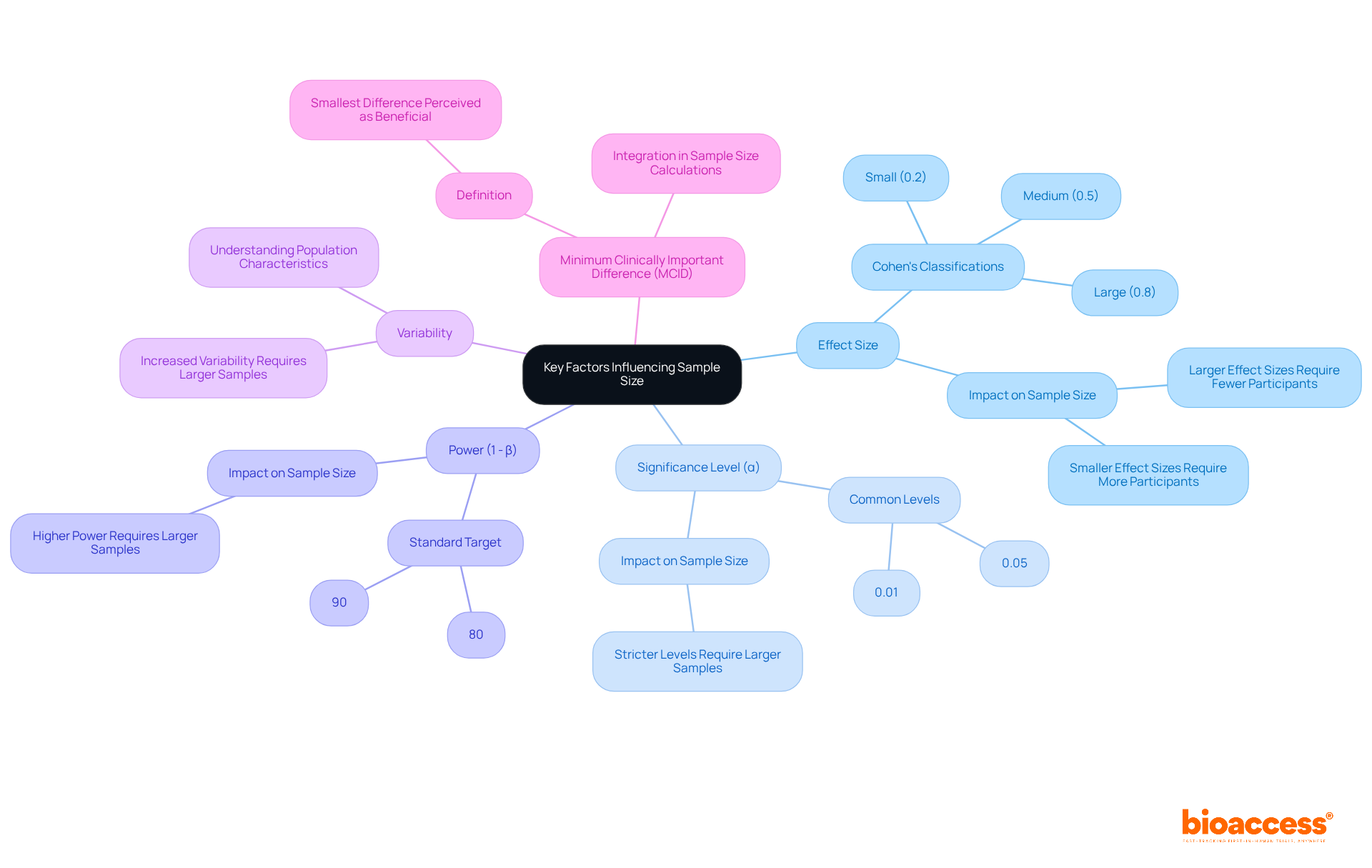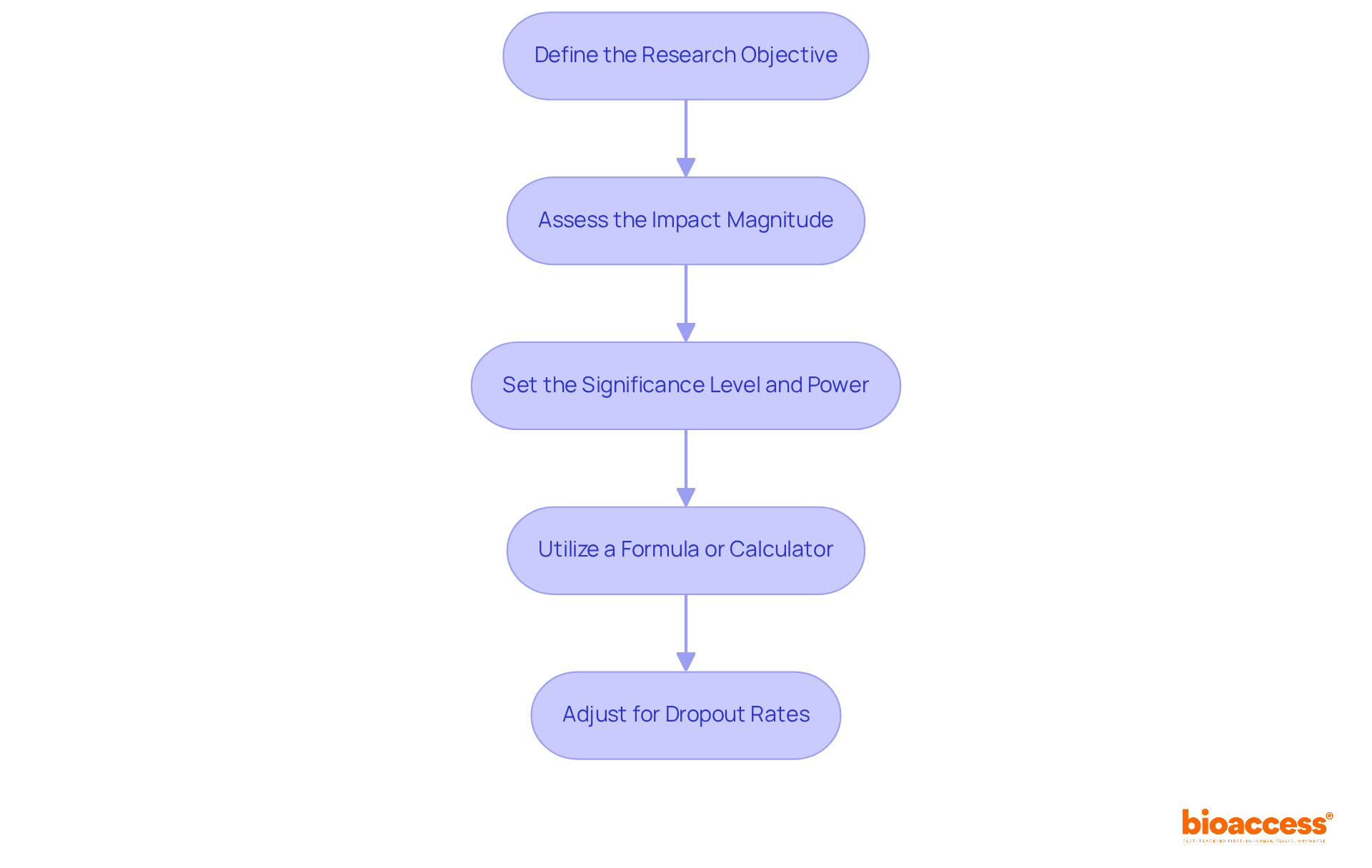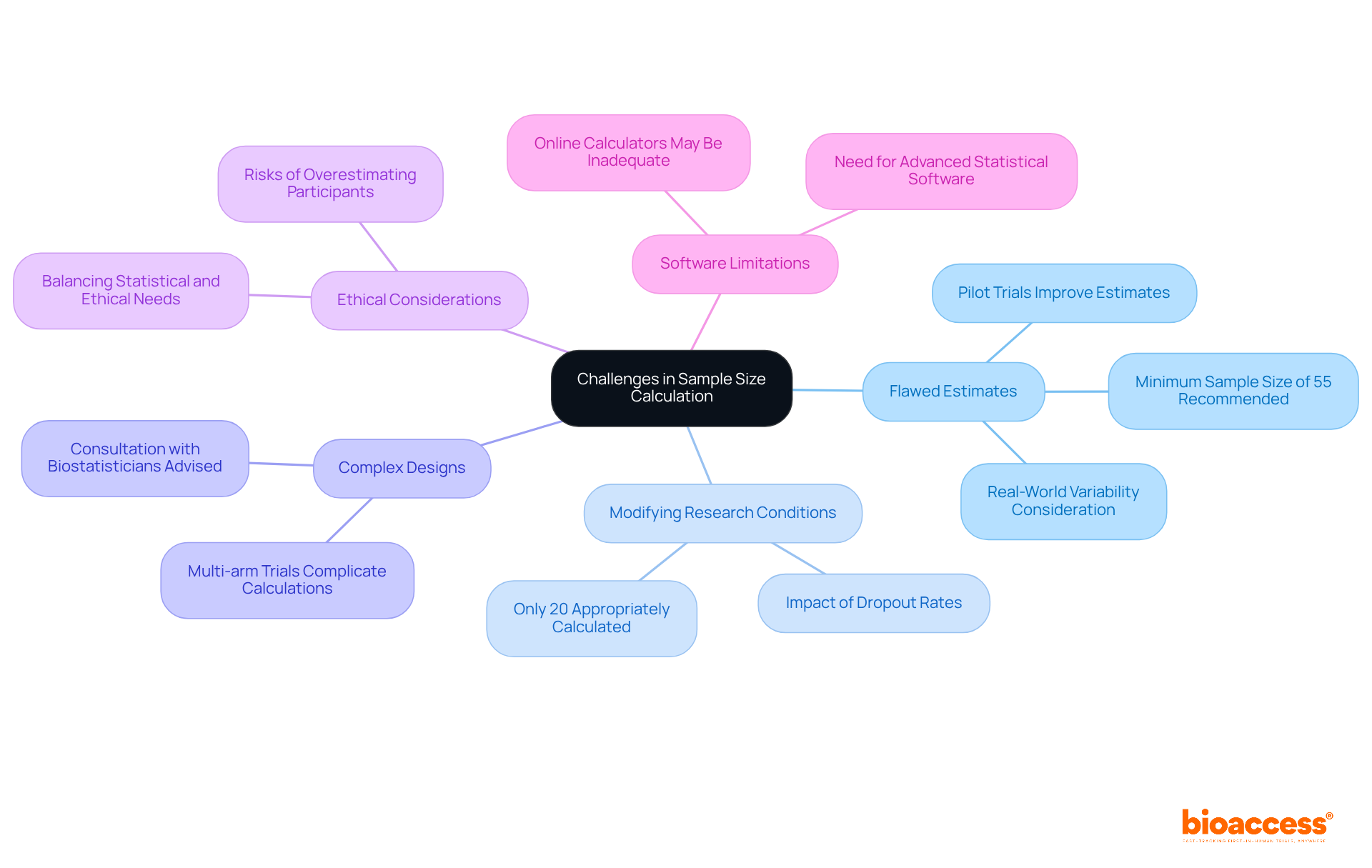


This article underscores the critical importance of calculating sample size in clinical trials, asserting that the accurate determination of participant numbers is vital for achieving statistically significant and ethically sound research outcomes. It highlights the repercussions of both underpowered and overpowered trials, delving into the key factors that influence sample size. Furthermore, it outlines a systematic approach to calculating the necessary sample size, thereby ensuring the validity and reliability of clinical findings. By understanding these elements, researchers can enhance the integrity of their studies and contribute to the advancement of clinical research.
Mastering the intricacies of clinical trial sample size calculation is not merely a technical necessity; it is a pivotal element that can determine the success or failure of a research project. A well-calculated sample size ensures that studies yield statistically significant results, while also adhering to ethical standards by avoiding unnecessary risks to participants.
However, with numerous factors influencing these calculations—such as effect size, variability, and dropout rates—how can researchers effectively navigate these complexities to achieve reliable outcomes?
This guide delves into the essential steps and considerations for mastering sample size calculation, equipping researchers with the necessary tools to enhance the validity of their clinical trials.
The determination of the minimum number of participants necessary to achieve statistically significant results is achieved through clinical trial sample size calculation, which is a cornerstone of clinical trial design. An accurately determined group magnitude, achieved through clinical trial sample size calculation, guarantees that a research project possesses sufficient strength to identify clinically significant effects. For instance, underpowered trials, such as those with fewer than 80% power, often yield inconclusive results, failing to provide meaningful insights into treatment efficacy. A significant instance is the DREAMS research, which originally determined a group of 950 patients to evaluate the effect of preoperative dexamethasone on postoperative vomiting, emphasizing the importance of thorough participant planning.
Conversely, overpowered studies can lead to ethical dilemmas and resource wastage, exposing participants to unnecessary risks without yielding significant clinical insights. Francesca Botta, a Senior Biostatistician, highlights that conducting trials with insufficient participant numbers is both ineffective and unethical, as it restricts the possibility of valuable discoveries.
At bioaccess®, with over 20 years of experience in Medtech, we recognize that a well-calculated group of subjects is essential for the success of various trial types, including:
Our tailored strategy ensures that the implications of estimating the number of participants are fully understood and addressed, making it crucial for any investigator engaged in clinical trials.
Recent research highlights the significance of determining the number of participants in achieving dependable results. For instance, research on gestational diabetes revealed that a group of 96 patients was necessary to identify a significant difference in newborn weights, considering a 15% attrition rate. This illustrates how precise calculations can directly influence the validity of research findings.
Ultimately, understanding the consequences of clinical trial sample size calculation is crucial for researchers involved in clinical trials. It balances the need for statistical significance with ethical considerations, ensuring that participant enrollment is adequate without exposing them to unnecessary risks. As the number of observations grows, influence estimates become steadier, and confidence ranges tighten, improving the accuracy of the study's findings.

Several key factors significantly influence sample size calculations:
Effect Size: This represents the magnitude of the difference anticipated between groups. Greater impact magnitudes typically enable fewer participants to reach statistical significance. For example, Cohen's classifications suggest that a magnitude of 0.2 is small, 0.5 is medium, and 0.8 is large. A medium influence magnitude of 0.5 can be visually identified, while a small influence magnitude of 0.2 may necessitate larger groups to observe significant differences. It is crucial to recognize that the necessary number of observations grows as the impact magnitude diminishes.
Significance Level (α): Typically set at 0.05, this value denotes the probability of incorrectly rejecting the null hypothesis when it is true. For the majority of hypothesis tests, the level of significance is arbitrarily chosen at 5%. A more stringent significance level, such as 0.01, requires a larger group to maintain the same power, as it reduces the likelihood of Type I errors.
Power (1 - β): This is the probability of correctly rejecting the null hypothesis when it is false, with a standard target of 80% or higher. Reaching this level of power frequently necessitates expanding the group, especially when the anticipated impact is minimal. For instance, to identify a medium impact of 0.5 with 80% power, roughly 60 participants per group are required.
Variability: Increased variability within the data requires a larger group to reliably identify an outcome. Understanding the characteristics of the population can aid in accurately estimating this variability. For example, if a research project expects a high degree of variability in outcomes, the number of participants must be modified accordingly to ensure sufficient power to identify significant differences.
Minimum Clinically Important Difference (MCID): This concept is vital in establishing the impact magnitude and participant quantity, as it identifies the smallest difference that patients view as advantageous. Integrating MCID into participant calculations can improve the significance of the study results.
In summary, the interplay between effect magnitude, significance level, power, variability, and the MCID is crucial for the clinical trial sample size calculation needed to determine the appropriate cohort in clinical trials. By carefully considering these factors, researchers can enhance the validity and reliability of their findings.

To effectively calculate the sample size, follow these essential steps:
Define the Research Objective: Clearly articulate the primary aim of your research. This foundational step is crucial as it directly influences the subsequent sample quantity calculation.
Assess the Impact Magnitude: Estimate the anticipated impact magnitude based on insights from prior studies or pilot data. Utilize statistical software or recognized tables to determine the appropriate effect magnitude value, which is vital for precise calculations.
Set the Significance Level and Power: Establish your significance level (α), typically set at 0.05, along with the desired statistical power, commonly at 0.80. These parameters are crucial as they significantly influence the clinical trial sample size calculation needed for the study.
Utilize a Formula or Calculator for Clinical Trial Sample Size Calculation: Depending on your study design—such as comparing means or proportions—apply the relevant formula or an online calculator to determine the necessary number of participants. For instance, when comparing two means, the formula is:
n = (Zα/2 + Zβ)² * (σ1² + σ2²) / (μ1 - μ2)²
where Zα/2 represents the Z-score for the significance level, Zβ is the Z-score for the power, σ1 and σ2 are the standard deviations, and μ1 and μ2 are the means of the two groups.

Sample size calculation presents several challenges that can significantly impact the integrity and outcomes of clinical trials:
Flawed Estimates: Assessing effect magnitudes and variability frequently poses a challenge for researchers. Pilot experiments are essential in supplying the required data to improve these estimations for clinical trial sample size calculation, resulting in more dependable calculations for the number of participants. Research has demonstrated that pilot trials can enhance the clinical trial sample size calculation by considering real-world variability, thereby improving the overall quality of the primary trial. Sim and Lewis suggest a pilot trial participant count of at least 55 individuals to reduce overall participant requirements.
Modifying Research Conditions: Alterations in research parameters, such as elevated dropout rates, necessitate recalculating the participant count to maintain the research's integrity. Failing to do so can compromise the validity of the trial results. In fact, only 20% of participant groups were calculated appropriately in reviewed randomized controlled trials, which highlights the significance of clinical trial sample size calculation and flexibility throughout the research process.
Complex Designs: Multi-arm trials or studies with numerous endpoints complicate participant calculations. In these scenarios, consulting a biostatistician is advisable to navigate the intricacies and ensure that all variables are accurately accounted for. Advanced statistical software is often necessary to handle the complex calculations involved in clinical trial sample size calculation effectively.
Ethical Considerations: Overestimating the number of subjects can lead to unnecessary exposure of participants to potential risks. It is crucial to balance statistical requirements with ethical considerations, ensuring that participant safety remains a priority while still achieving robust data. Overestimating group dimensions can expose participants to risks without producing substantial data.
Software Limitations: While numerous online calculators are available, they may not encompass all variables specific to your study. Familiarizing yourself with advanced statistical software capable of handling complex calculations is vital for the clinical trial sample size calculation, ultimately enhancing the reliability of your clinical research.

Determining the appropriate sample size in clinical trials transcends a mere mathematical exercise; it stands as a fundamental pillar of research design that upholds the validity and ethical integrity of the study. An accurately calculated sample size empowers researchers to detect clinically significant effects while safeguarding participants from undue risk. The critical nature of sample size calculation cannot be overstated; it serves as the backbone of robust clinical research, influencing both outcomes and ethical considerations alike.
Key factors that influence sample size encompass:
Each of these elements plays a pivotal role in determining the necessary number of participants for a study, as underscored by various examples and insights throughout this article. By meticulously adhering to a structured approach to sample size calculation, researchers can adeptly navigate the complexities of clinical trials and enhance the reliability of their findings.
Ultimately, the ramifications of an inadequate sample size extend well beyond mere statistical significance; they can obstruct the advancement of medical knowledge and jeopardize participant safety. Researchers are urged to adopt rigorous sample size calculation practices, leveraging pilot studies and advanced statistical tools to tackle challenges and refine their estimates. By prioritizing precision in sample size determination, the medical research community can ensure that clinical trials yield meaningful insights that contribute to the betterment of healthcare.
What is the purpose of sample size calculation in clinical trials?
Sample size calculation determines the minimum number of participants necessary to achieve statistically significant results, ensuring that a research project has sufficient strength to identify clinically significant effects.
What are the consequences of having an underpowered trial?
Underpowered trials, typically those with fewer than 80% power, often yield inconclusive results and fail to provide meaningful insights into treatment efficacy.
Can you provide an example of an underpowered trial?
The DREAMS research is an example where a group of 950 patients was initially determined to evaluate the effect of preoperative dexamethasone on postoperative vomiting, highlighting the importance of thorough participant planning.
What issues can arise from overpowered studies?
Overpowered studies can lead to ethical dilemmas and resource wastage, exposing participants to unnecessary risks without yielding significant clinical insights.
Why is participant number calculation considered both ineffective and unethical when insufficient?
Conducting trials with insufficient participant numbers restricts the possibility of valuable discoveries, making it ineffective and unethical.
What types of studies require careful sample size calculation?
Sample size calculation is essential for various trial types, including Early-Feasibility Studies (EFS), First-In-Human Studies (FIH), Pilot Studies, Pivotal Studies, and Post-Market Clinical Follow-Up Studies (PMCF).
How does sample size calculation impact research findings?
Precise calculations of participant numbers can directly influence the validity of research findings, as demonstrated by a study on gestational diabetes that required 96 patients to identify a significant difference in newborn weights.
Why is understanding sample size calculation important for researchers?
Understanding sample size calculation balances the need for statistical significance with ethical considerations, ensuring adequate participant enrollment without exposing them to unnecessary risks.
How does increasing the number of observations affect study findings?
As the number of observations grows, estimates become steadier and confidence ranges tighten, improving the accuracy of the study's findings.